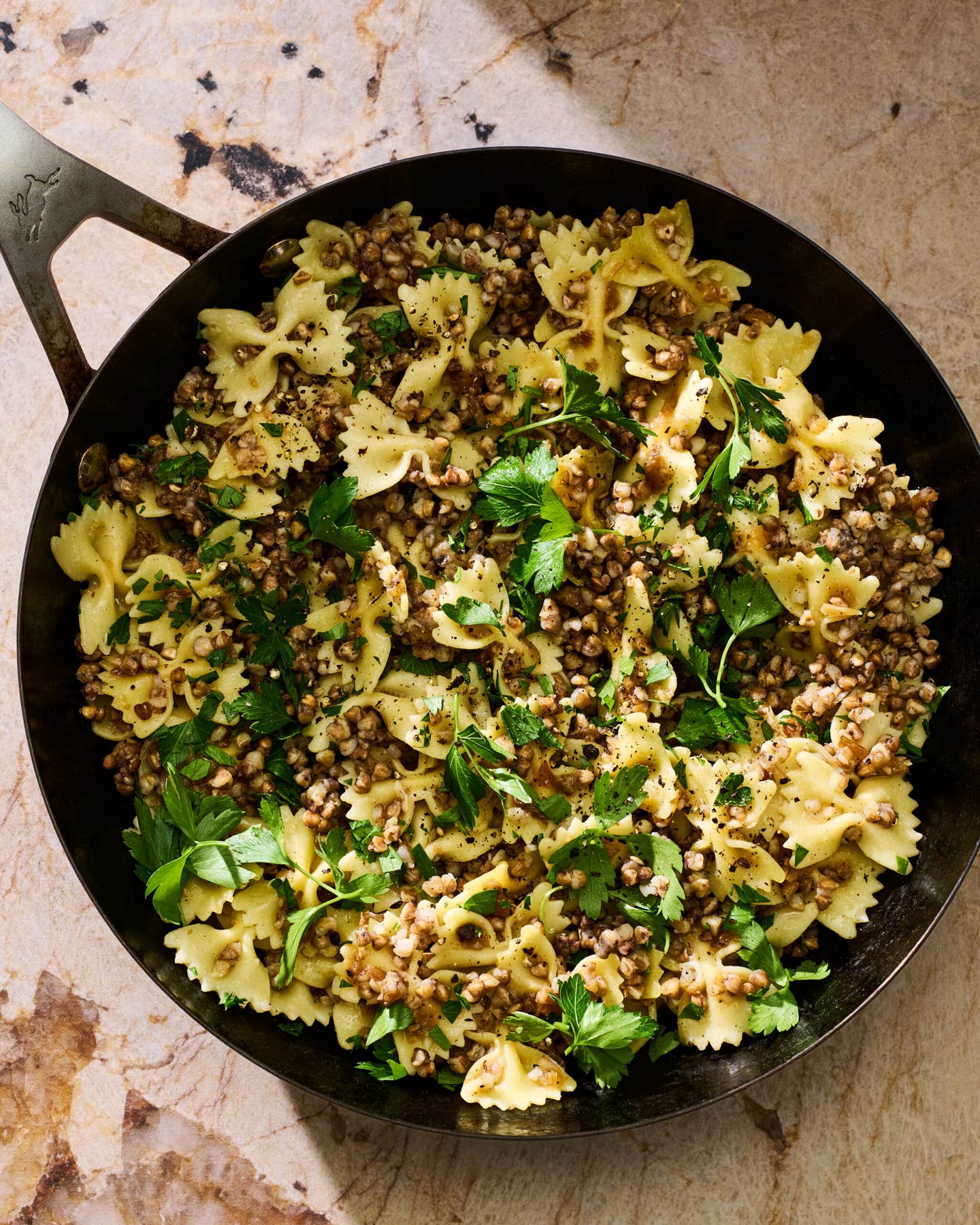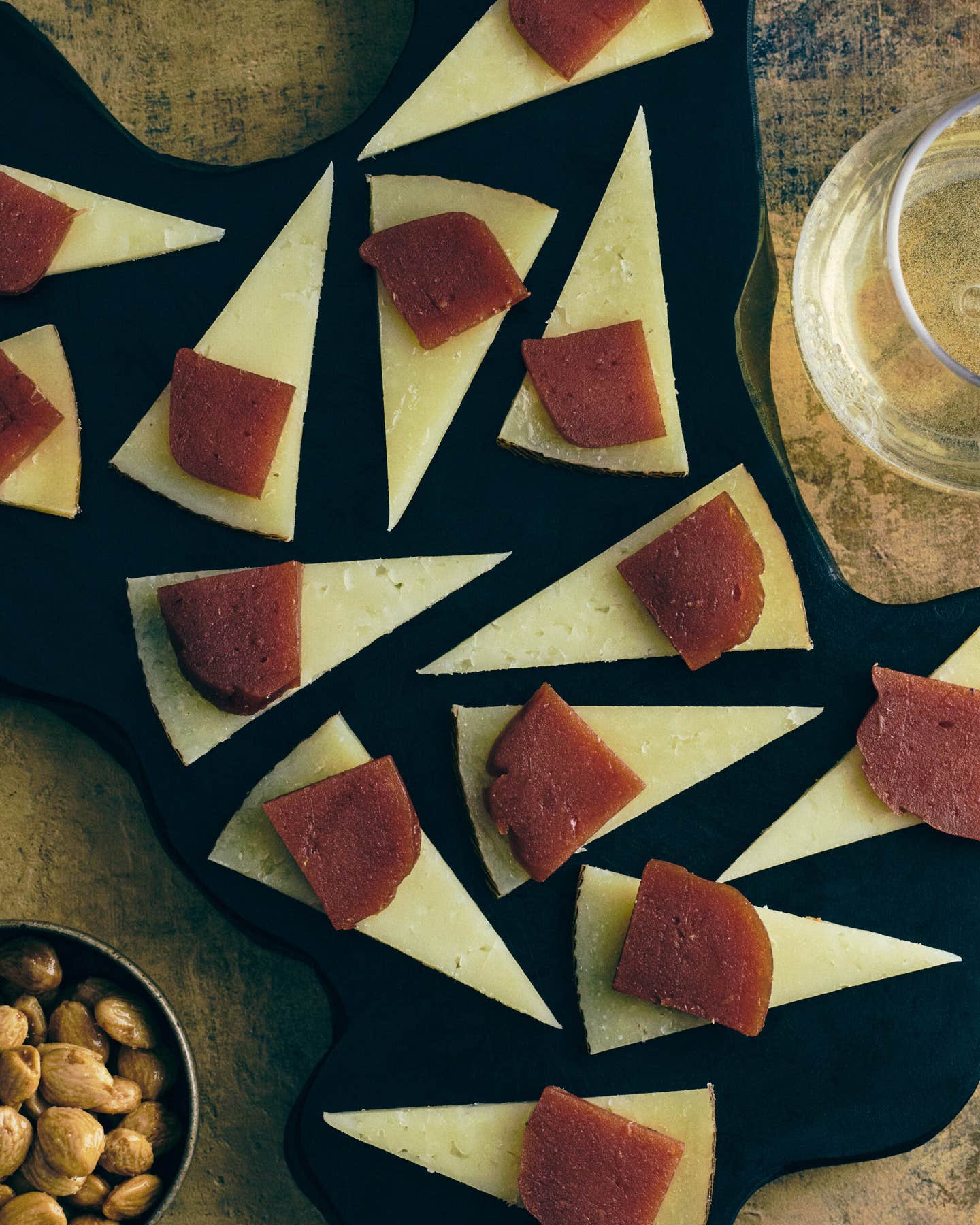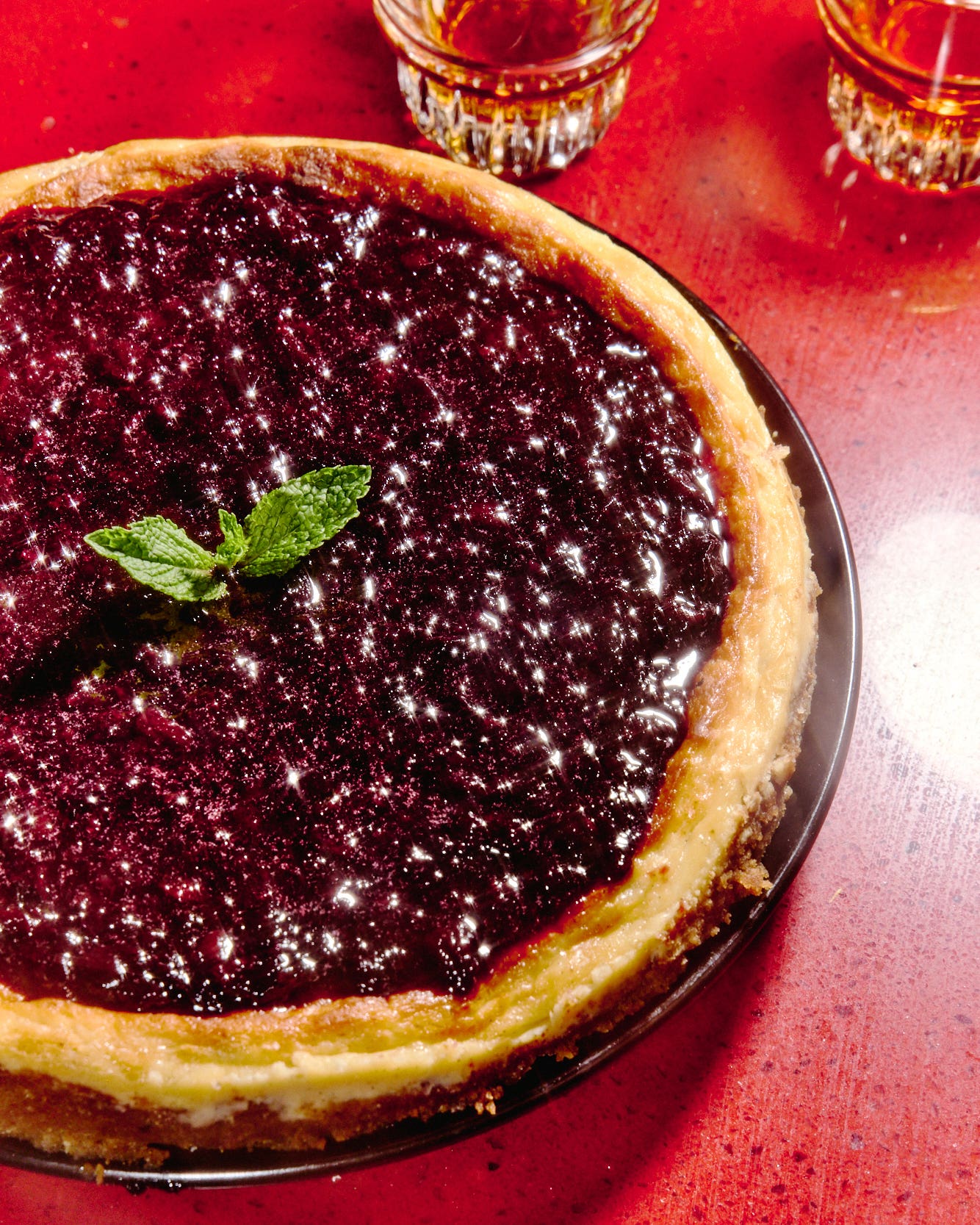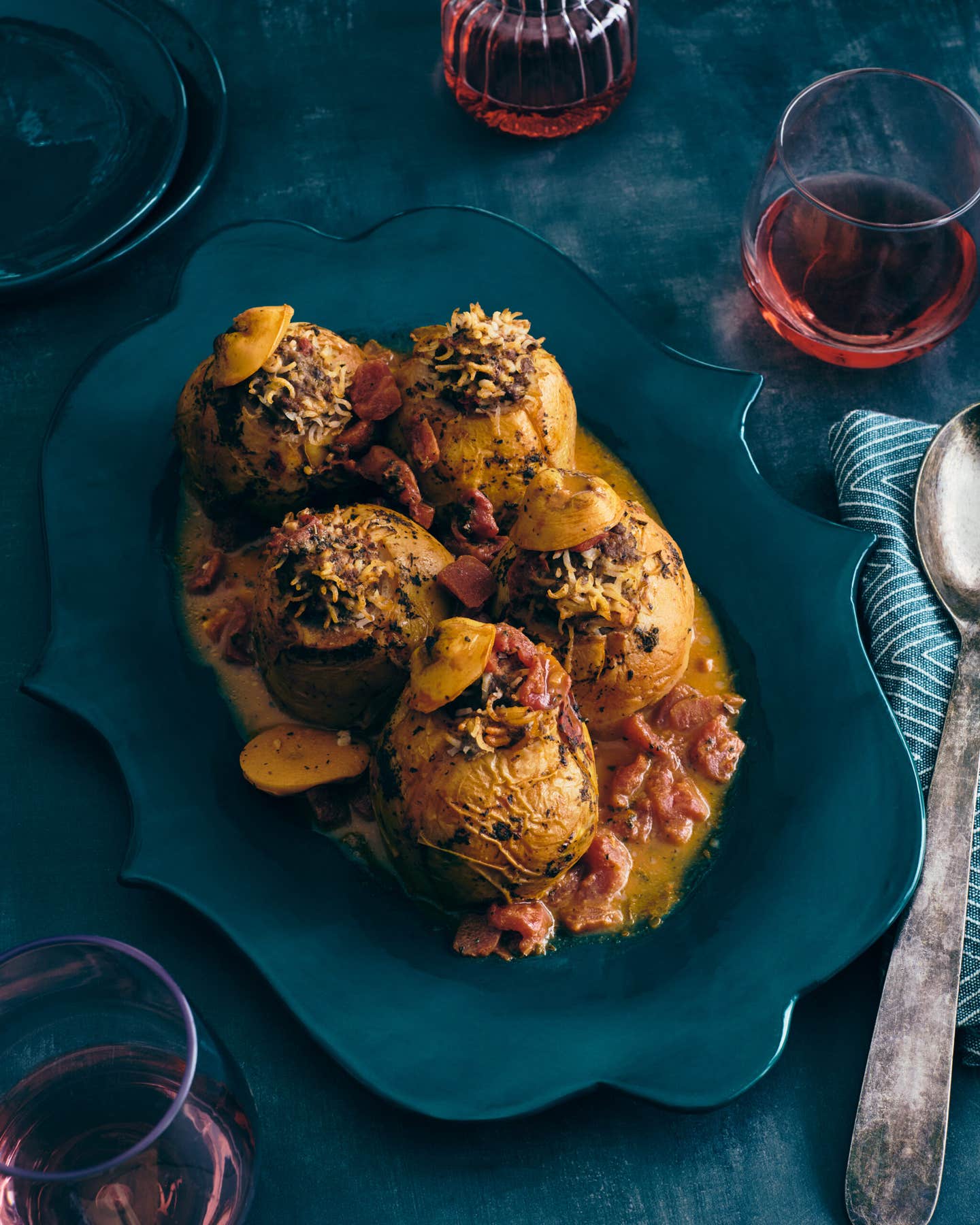The Saxelby Cheesecake
Plums, vanilla bean, and fresh chèvre sparkle in Caroline Schiff’s sweet tribute to the legend of American-made cheese.
- Serves
makes One 9-in. cheesecake
- Time
8 hours
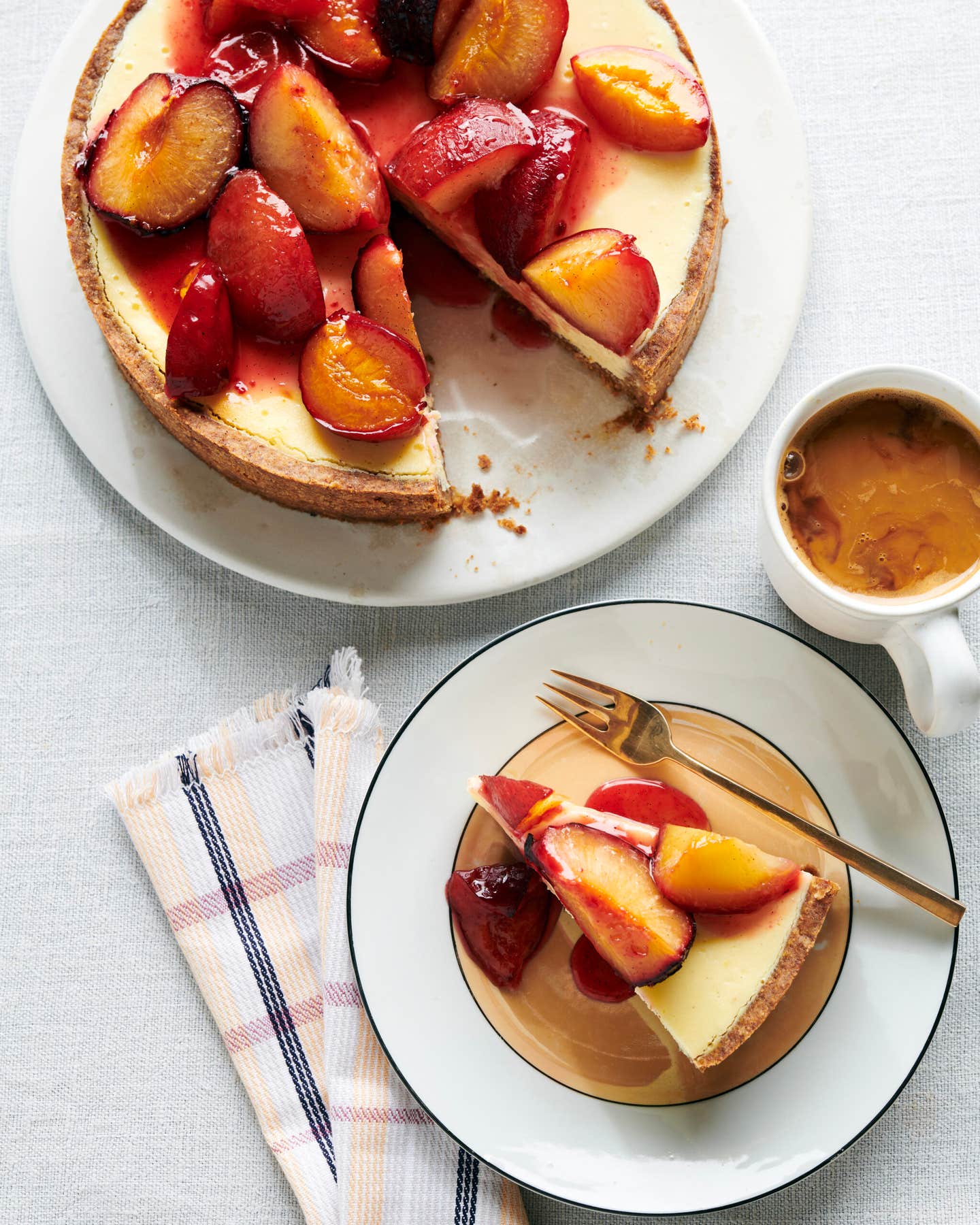
I first met Anne Saxelby in 2008 when I was 23 and working part-time selling cheese at Brooklyn’s Greene Grape Provisions. I was picking up shifts on my days off from cooking at The Good Fork, where I had just gotten an internship that quickly became a job. I needed to pay my rent, but moreover, I needed to feed my insatiable appetite for all things culinary. Cheese was always something I adored, so the Greene Grape gig was a pleasure. My coworkers and I regularly geeked out about new arrivals and Anne’s name came up daily. Her young cheese stall in Essex Market may have been small, but—just like Anne—it was mighty, and even then I could tell she was unstoppable.
Just about everyone in the cheese world seemed to know Anne. She was disrupting the American dairy industry in the best way, by showcasing domestic cheeses that could hold their own among the European stalwarts. Anne was larger than life, warm, charismatic, and of course, so excited to talk about cheese. She gave me my first taste of Harbison. She introduced me to Jasper Hill, and her beloved Cato Corner Farm. She taught me all about clothbound cheddars, washed rinds, and triple creams. She showed me how to make mozzarella with cultured curds from Pennsylvania, and then, even better, how to turn that mozzarella into stracciatella the next day. If you loved cheese even an iota as much as Anne did, you were an instant friend. She welcomed me on several occasions—beaming with pride—into her little cheese cave in Red Hook, feeding me slivers of whatever wheels her team was portioning for wholesale that day.
But Anne wasn't just a knowledgeable cheesemonger and affineur. She led a cheese revolution. Her passion gave a platform and a spotlight to dairy farmers doing incredible work. She educated her customers and a new generation of cheese makers and mongers and, gradually, she changed the way the world regarded American farmstead cheeses. She mentored and loved so many, and championed the little guys out there, going out of her way for everyone in her orbit.
When Anne passed away last fall, she left behind a legacy of education and sustainable agriculture. No one had integrity quite like Anne, and I can’t think of a more fitting way to honor her life and work than to continue celebrating her mission and passions.
I’ve put iterations of my chèvre cheesecake on menus since 2012, and it's become one of my signature desserts. I was honored that Anne came to taste this dish over the years in various establishments—most recently at Gage & Tollner, where the tangy goat cheese serves as a seasonal canvas and a creamy endnote to dinner. This cake pairs with anything that is lucious and in season: Jammy late-season plums for early autumn; roasted pears and maple later in the season; candied citrus in the doldrums of winter; and macerated berries, cherries, and peaches as spring turns to summer. I hope you’ll make this beauty at home, with a good-quality goat cheese that Anne would approve of. Anne, this cheesecake is forever for you.
Ingredients
For the filling:
- 20 oz. fresh goat cheese, softened at room temperature
- 1¼ cup sugar
- 1 Tbsp. finely grated lemon zest
- 1 vanilla bean, split lengthwise, seeds scraped and pod reserved, or 2 tsp. vanilla extract
- 1 tsp. kosher salt
- 1 cup heavy cream
- 4 large eggs
For the crust:
- Nonstick baking spray
- ¾ cup all-purpose flour
- ¼ cup whole wheat flour
- ⅓ cup light brown sugar
- ½ cup coarsely ground hazelnuts
- ¼ tsp. kosher salt
- 5 tablespoons unsalted butter, melted
For the roasted plum compote:
- 1 heaping pint ripe plums (about 1 lb.; choose a mixture of varieties and colors)
- 1 Tbsp. extra-virgin olive oil
- ½ cup granulated sugar
- 2 Tbsp. fresh lemon juice
- 4 thyme sprigs
- ¼ tsp. kosher salt
Instructions
Step 1
Step 2
Step 3
Step 4
Step 5
Step 6
Step 7
Step 8
Step 9
- To a food processor, add the chèvre, sugar, lemon zest, vanilla bean seeds, and salt, and pulse a few times to break up any lumps. Drizzle in the heavy cream, pulsing and occasionally using a silicone spatula to scrape down the sides and bottom of the bowl as needed, until no lumps remain (do not overmix). One at a time, add the eggs through the processor’s feed tube, pulsing until each egg is fully incorporated before adding the next.
- Place a fine mesh sieve over a large, resealable container, then scrape the custard into it. Using a silicone spatula, press the custard through the strainer, discarding any solids that remain. Cover tightly and refrigerate for at least 1 hour or up to 48 hours.
- Meanwhile, make the crust: Preheat the oven to 325°F. Lightly spray a 9-inch springform pan with nonstick cooking spray, line the bottom with a circle of parchment paper, and set aside.
- In a large bowl, stir together the all-purpose flour, whole wheat flour, brown sugar, hazelnuts, and salt. Pour in the melted butter, then use a silicone spatula to stir until the mixture resembles wet sand. Gently press the crust into the prepared pan in an even layer, allowing it to come up the sides for a thin crust. Refrigerate until firm, at least 20 minutes or up to 12 hours.
- Bake the crust until it is golden brown, fragrant, and slightly crisp to the touch, 20–25 minutes. Set aside to cool completely to room temperature before filling.
- When you’re ready to bake the cheesecake, preheat the oven to 300°F. Wrap the bottom of the springform pan tightly with aluminum foil and place it in a baking dish that is at least 2 inches deep. Pour the filling into the crust, then place the baking dish in the oven. Pour hot water into the baking dish to a depth of 1 inch, then bake until the cheesecake is set around the edges but still slightly jiggly in the center, about 1 hour.
- Remove the baking dish from the oven and cool the cheesecake, still in its water bath, completely to room temperature. Remove the cooled cheesecake from the water bath, cover with plastic wrap, and refrigerate for at least 6 and up to 12 hours.
- Make the plum compote: Preheat the oven to 375°F. Pit the plums and cut into halves or quarters, depending on their size. In a 9- by 13-inch baking dish, toss the plums with the olive oil, then stir in the sugar, lemon juice, thyme, salt, and the reserved vanilla bean pod. Transfer to the oven and roast, stirring once halfway through cooking, until the plums are jammy, vibrant, and bubbling, 20–25 minutes. Remove from the oven and set aside to cool to room temperature. Remove and discard the thyme stems and vanilla pod, then scrape the cooled compote into an airtight container and refrigerate.
- To unmold the cheesecake, run a thin knife around the edge, then carefully remove the outer ring of the springform pan. Slide the cake onto a serving platter and top with the plum compote. Cut into wedges and serve chilled.
Keep Reading
Continue to Next Story



